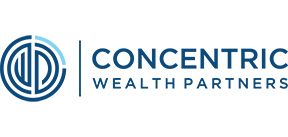2023 Year-End Market Outlook
Throughout the run of the Federal Reserve’s (Fed) inflation-fighting, rate-raising program, the equity market has shown uncommon enthusiasm supported by a growing economy, a strong labor market and healthy consumer spending. Contrary to the expected way of these things, inflation continued to cool even as the economy and the markets remained hot.
July helped get the third quarter of 2023 off to a strong start. However, the continued rise in interest rates—which sharply accelerated in September—proved to be too much for the equity markets to overcome, leaving both stock and bond market returns down approximately 4.0% and 3.0% respectively for the quarter. According to Raymond James Chief Investment Officer Larry Adam, “We believe the economic cycle may be reaching an inflection point. The S&P 500 had its second-best start to a year since 1997, and we’ve warned that equity markets were due for a pullback. Our view is that the economy is slowing, not imploding.”
As we highlighted in our last market commentary in May, we believed that a “higher for longer” regime is most likely and that rate cuts would be unlikely this year. After the most recent Fed meeting, it seems that equity markets are finally coming to this realization. From a positioning standpoint, we continue to favor US Equities over International and are emphasizing quality in our sector selection.
Looking forward near term, the good news is that U.S. stocks typically post their best returns in the final quarter of the year. Our review of S&P 500 performance since the index’s inception in 1957 found an average Q4 uptick of 4%. (Q1 was next best at an average 2%.) In years when performance in the first three quarters came in at or above where we sit year-to-date, index moves in the final quarter were positive in all but three instances, with the October 1987 stock market crash making that year an outlier. See chart below.
We are cautiously optimistic for Q4 2023. The market has already defied expectations and the economy is operating on a slim output gap ― meaning all resources are running near full potential. This argues for a continued focus on resilience in equity allocations. Still, because much of the market’s return this year has been driven by a handful of mega-cap stocks in the “tech-plus” sectors, we believe there is opportunity to uncover those next-level stocks that have yet to be fully rewarded for their fundamentals.
When last is first: Final quarters have tended to leadS&P 500 Index performance, years since 1957 when Q1-Q3 topped 16%

Source: BlackRock Fundamental Equities, with data from Bloomberg, Aug. 31, 2023. Chart shows those years since 1957 when the S&P 500 Index achieved Q1-Q3 price returns that met or exceeded 16% (the current ytd return through Aug. 31) and the ensuing Q4 return. Past performance is not indicative of current or future results. Indexes are unmanaged. It is not possible to invest directly in an index.
September saw some investors’ hopes for a “soft landing” – a corrective to inflation without a recessionary side effect – challenged, pulling air out of the equity market. Though the economy and labor market remained strong in the third quarter, data continue to suggest a mild recession in the first half of 2024.
We expect volatile conditions to continue into the fourth quarter, but our overall outlook remains positive. As human beings, it is completely natural to become frustrated at this point in the market cycle. The last 24 months have left many feeling like their portfolios are “stuck in the mud”. But, as long-term investors, down markets present opportunities to acquire high-quality assets.
Times like this remind us of a quote from famed investor Sir John Templeton, “The four most dangerous words in investing are, ‘this time is different’”. The truth is, they are ALWAYS different. Templeton believed in the importance of disciplined investing and avoiding irrational exuberance. Investors should be careful of assuming that current market conditions and trends will persist indefinitely.
If you’d like to learn more, please check out Raymond James’ Investment Strategy Committee report found here which includes a briefing on the 2024 election.
We are honored to have earned your trust as we pursue your financial goals together. If you have any questions about your portfolio, financial plan or wish to discuss the movement of the market, please reach out at your earliest convenience.
The opinions expressed are those of Christopher Vidler and Eric Van Der Hyde as of the date stated and are subject to change. There is no guarantee that the forecasts made will come to pass. This material does not constitute investment advice and is not intended as an endorsement of any specific investment or security. Information and opinions are derived from proprietary and non-proprietary sources. Options are not necessarily those of Raymond James.
Please remember that all investments carry some level of risk, including the potential loss of principal invested. Diversification and strategic asset allocation do not assure profit or protect against loss.
The S&P 500 is an unmanaged index of 500 widely held stocks that is generally considered representative of the U.S. stock market. Keep in mind that individuals cannot invest directly in any index, and index performance does not include transaction costs or other fees, which will affect actual investment performance. Individual investor's results will vary.

